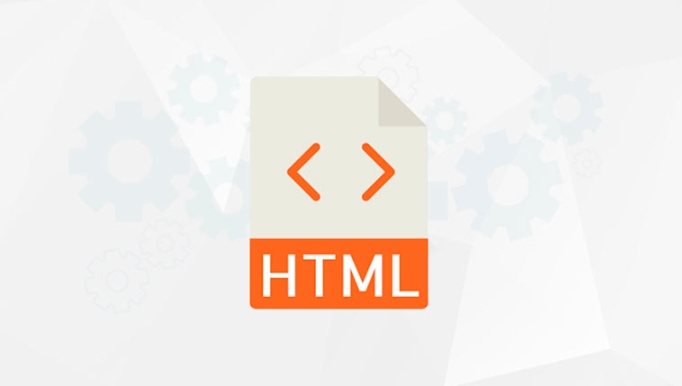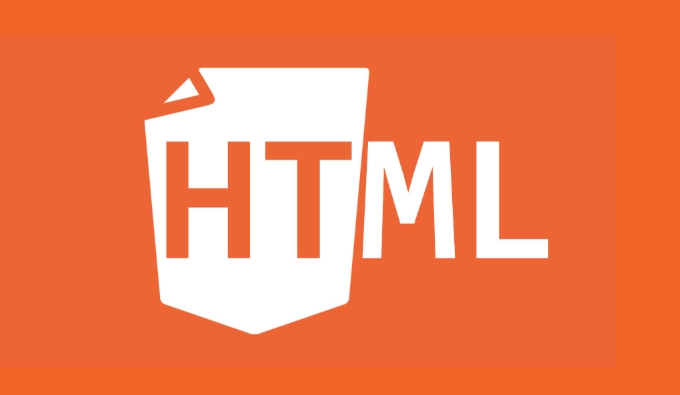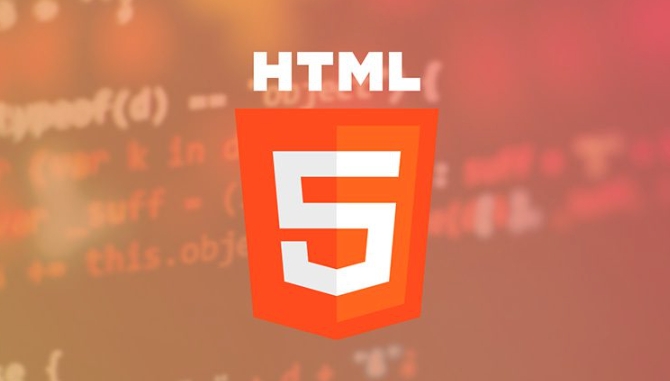The four most impactful HTML attributes for SEO are the title tag, alt attribute, href attribute, and meta description. 1. The title tag in the
section is crucial as it informs users and search engines about the page’s content, must be concise, keyword-relevant, under 60 characters, and unique per page. 2. The alt attribute describes images using clear, descriptive text with natural keyword inclusion to improve accessibility and image search visibility, avoiding generic phrases like “image of”. 3. The href attribute shapes internal linking, guiding both user navigation and search engine crawling; best practices include using descriptive anchor text and limiting low-quality outbound links. 4. The meta description, although not a direct ranking factor, influences click-through rates by providing a compelling, concise summary of the page content, ideally between 150–160 characters and tailored to each page. Focusing on these attributes builds a strong technical SEO foundation.
When it comes to SEO, not all HTML attributes are created equal. Some play a much bigger role in helping search engines understand your content and rank it appropriately. While there are many tags and attributes you might encounter, a few stand out as particularly impactful for SEO.

1. title Attribute (and <title></title> Tag)
While the title attribute is commonly used in HTML elements like links and images, the most important one for SEO is the <title></title> tag in the section of your page.

This tag tells both users and search engines what the page is about. It shows up in search results as the clickable headline, so it needs to be concise, keyword-relevant, and unique per page.
Tips:

- Keep titles under 60 characters to avoid truncation.
- Place primary keywords near the beginning.
- Avoid repeating the same title across multiple pages.
You’d be surprised how often this gets overlooked — especially on category or archive pages where dynamic titles aren’t properly set.
2. alt Attribute for Images
Search engines can't "see" images the way humans do, which is why the alt attribute is crucial. It provides a text alternative that describes the image’s content and context.
Well-written alt text helps with accessibility and image SEO, potentially getting your images ranked in Google Images too.
How to use it effectively:
- Describe the image using short, clear phrases.
- Include relevant keywords only if they naturally fit.
- Skip generic phrases like “imageof” or “photoof”.
For example, instead of writing alt="Which html attributes are most important for SEO?", go with something more descriptive like alt="red running Which html attributes are most important for SEO? for women" if that’s exactly what the image shows.
3. href and Internal Linking Structure
The href attribute inside anchor (<a></a>) tags defines your internal and external links. From an SEO standpoint, internal linking with thoughtful href placement helps search engines crawl your site more efficiently.
It also distributes authority throughout your site and keeps users engaged longer.
Best practices:
- Use descriptive anchor text rather than generic terms like “click here.”
- Link to related content to help with user navigation and SEO.
- Avoid excessive outbound links to unrelated or low-quality sites.
Think of your internal links like a roadmap — the clearer it is, the easier it is for both users and search bots to follow.
4. meta name="description"
Technically, the meta description doesn’t directly impact rankings, but it's still incredibly important for SEO indirectly. It often appears in search results below the title and URL, acting as a pitch to get users to click through.
A compelling description can boost your click-through rate (CTR), which can influence rankings over time.
What to keep in mind:
- Aim for 150–160 characters to avoid being cut off.
- Make it action-oriented and relevant to the query.
- Customize each page’s description to reflect its unique content.
Google sometimes rewrites meta descriptions, but having a solid one gives them a good starting point.
That’s the core group — nothing overly complex, but each one carries real weight when done right. Focusing on these HTML attributes will give you a solid foundation for technical SEO without diving into the deep end.
The above is the detailed content of Which html attributes are most important for SEO?. For more information, please follow other related articles on the PHP Chinese website!

Hot AI Tools

Undress AI Tool
Undress images for free

Undresser.AI Undress
AI-powered app for creating realistic nude photos

AI Clothes Remover
Online AI tool for removing clothes from photos.

Clothoff.io
AI clothes remover

Video Face Swap
Swap faces in any video effortlessly with our completely free AI face swap tool!

Hot Article

Hot Tools

Notepad++7.3.1
Easy-to-use and free code editor

SublimeText3 Chinese version
Chinese version, very easy to use

Zend Studio 13.0.1
Powerful PHP integrated development environment

Dreamweaver CS6
Visual web development tools

SublimeText3 Mac version
God-level code editing software (SublimeText3)
 Implementing Clickable Buttons Using the HTML button Element
Jul 07, 2025 am 02:31 AM
Implementing Clickable Buttons Using the HTML button Element
Jul 07, 2025 am 02:31 AM
To use HTML button elements to achieve clickable buttons, you must first master its basic usage and common precautions. 1. Create buttons with tags and define behaviors through type attributes (such as button, submit, reset), which is submitted by default; 2. Add interactive functions through JavaScript, which can be written inline or bind event listeners through ID to improve maintenance; 3. Use CSS to customize styles, including background color, border, rounded corners and hover/active status effects to enhance user experience; 4. Pay attention to common problems: make sure that the disabled attribute is not enabled, JS events are correctly bound, layout occlusion, and use the help of developer tools to troubleshoot exceptions. Master this
 Configuring Document Metadata Within the HTML head Element
Jul 09, 2025 am 02:30 AM
Configuring Document Metadata Within the HTML head Element
Jul 09, 2025 am 02:30 AM
Metadata in HTMLhead is crucial for SEO, social sharing, and browser behavior. 1. Set the page title and description, use and keep it concise and unique; 2. Add OpenGraph and Twitter card information to optimize social sharing effects, pay attention to the image size and use debugging tools to test; 3. Define the character set and viewport settings to ensure multi-language support is adapted to the mobile terminal; 4. Optional tags such as author copyright, robots control and canonical prevent duplicate content should also be configured reasonably.
 Best HTML tutorial for beginners in 2025
Jul 08, 2025 am 12:25 AM
Best HTML tutorial for beginners in 2025
Jul 08, 2025 am 12:25 AM
TolearnHTMLin2025,chooseatutorialthatbalanceshands-onpracticewithmodernstandardsandintegratesCSSandJavaScriptbasics.1.Prioritizehands-onlearningwithstep-by-stepprojectslikebuildingapersonalprofileorbloglayout.2.EnsureitcoversmodernHTMLelementssuchas,
 HTML for email templates tutorial
Jul 10, 2025 pm 02:01 PM
HTML for email templates tutorial
Jul 10, 2025 pm 02:01 PM
How to make HTML mail templates with good compatibility? First, you need to build a structure with tables to avoid using div flex or grid layout; secondly, all styles must be inlined and cannot rely on external CSS; then the picture should be added with alt description and use a public URL, and the buttons should be simulated with a table or td with background color; finally, you must test and adjust the details on multiple clients.
 How to associate captions with images or media using the html figure and figcaption elements?
Jul 07, 2025 am 02:30 AM
How to associate captions with images or media using the html figure and figcaption elements?
Jul 07, 2025 am 02:30 AM
Using HTML sums allows for intuitive and semantic clarity to add caption text to images or media. 1. Used to wrap independent media content, such as pictures, videos or code blocks; 2. It is placed as its explanatory text, and can be located above or below the media; 3. They not only improve the clarity of the page structure, but also enhance accessibility and SEO effect; 4. When using it, you should pay attention to avoid abuse, and apply to content that needs to be emphasized and accompanied by description, rather than ordinary decorative pictures; 5. The alt attribute that cannot be ignored, which is different from figcaption; 6. The figcaption is flexible and can be placed at the top or bottom of the figure as needed. Using these two tags correctly helps to build semantic and easy to understand web content.
 How to handle forms submission in HTML without a server?
Jul 09, 2025 am 01:14 AM
How to handle forms submission in HTML without a server?
Jul 09, 2025 am 01:14 AM
When there is no backend server, HTML form submission can still be processed through front-end technology or third-party services. Specific methods include: 1. Use JavaScript to intercept form submissions to achieve input verification and user feedback, but the data will not be persisted; 2. Use third-party serverless form services such as Formspree to collect data and provide email notification and redirection functions; 3. Use localStorage to store temporary client data, which is suitable for saving user preferences or managing single-page application status, but is not suitable for long-term storage of sensitive information.
 What are the most commonly used global attributes in html?
Jul 10, 2025 am 10:58 AM
What are the most commonly used global attributes in html?
Jul 10, 2025 am 10:58 AM
class, id, style, data-, and title are the most commonly used global attributes in HTML. class is used to specify one or more class names to facilitate style setting and JavaScript operations; id provides unique identifiers for elements, suitable for anchor jumps and JavaScript control; style allows for inline styles to be added, suitable for temporary debugging but not recommended for large-scale use; data-properties are used to store custom data, which is convenient for front-end and back-end interaction; title is used to add mouseover prompts, but its style and behavior are limited by the browser. Reasonable selection of these attributes can improve development efficiency and user experience.
 Implementing Native Lazy Loading for Images in HTML
Jul 12, 2025 am 12:48 AM
Implementing Native Lazy Loading for Images in HTML
Jul 12, 2025 am 12:48 AM
Native lazy loading is a built-in browser function that enables lazy loading of pictures by adding loading="lazy" attribute to the tag. 1. It does not require JavaScript or third-party libraries, and is used directly in HTML; 2. It is suitable for pictures that are not displayed on the first screen below the page, picture gallery scrolling add-ons and large picture resources; 3. It is not suitable for pictures with first screen or display:none; 4. When using it, a suitable placeholder should be set to avoid layout jitter; 5. It should optimize responsive image loading in combination with srcset and sizes attributes; 6. Compatibility issues need to be considered. Some old browsers do not support it. They can be used through feature detection and combined with JavaScript solutions.






